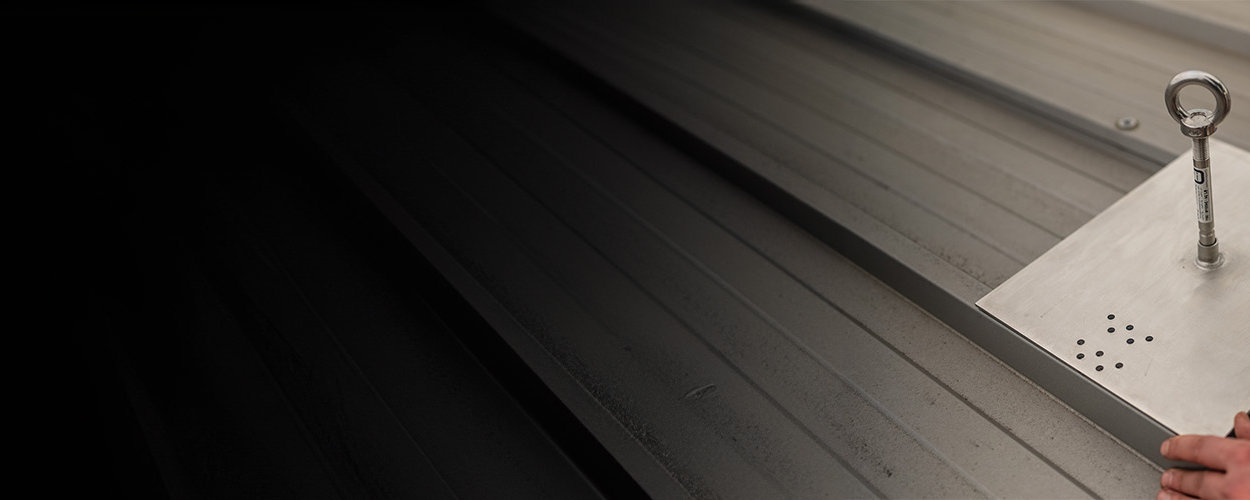When dealing with fall protection, sooner or later the question arises: ‘At what height do I have to install fall protection?’. As a great deal of emphasis is placed on occupational safety in Germany, there are precise regulations on this. However, the exact heights at which protective measures are required can vary depending on the situation. At this point, it is important to define what exactly is meant by fall protection. Generally speaking, all measures that help to prevent a fall can be considered fall protection. This includes obvious technical installations such as balustrades and railings or even defences.
At what height do you need fall protection?
DGUV regulation 38 §12 lists 5 different scenarios.
- regardless of the fall height on traffic routes and workplaces near water or liquid substances (e.g. more than 1 metre (100 cm) fall height for exposed stairways, landings, wall openings, machine operating stands
- more than 2 metres (200 cm) fall height for all other workplaces and
- traffic routes more than 3 metres (300 cm) fall height for workplaces and traffic routes on roofs
- more than 5 metres (500 cm) fall height when building walls over the hand and when working on windows
However, it should be noted here that the fall heights are not rigidly fixed and may vary from case to case, also taking into account the following factors.
- Fall height: The higher the fall height, the greater the risk of serious injuries or fatal falls.
- Distance to the edge of the fall: The closer you are to the edge of the fall, the less time you have to react to a fall.
- Nature of the surface: A hard surface such as concrete or stone increases the risk of serious injury on impact compared to softer surfaces such as earth or grass.
- Groups of people vs. individuals: When planning fall protection systems, the number of people to be protected and their individual risk must be taken into account.
Fall protection must therefore be planned on an individual basis, taking into account the prevailing conditions. A generalised application of the heights specified in DGUV regulation 38 §12 is not sufficient to ensure the necessary protection. Our occupational safety experts will be happy to assist you with the planning and implementation of suitable fall protection systems. For a more comprehensive list of applicable regulations, please refer to our glossary entry - Regulations for fall protection.
Parapet height for windows and skylights
The height of the window sill plays an important role in both the safety and functionality of the window. Various factors must be taken into account, in particular the fall height and the use of the window as an escape route.
General rules:
- Fall height up to 12 metres: In Germany, the model building regulations stipulate a minimum height of 80 cm for the window sill.
- Fall height over 12 metres: From a fall height of 12 metres, the parapet must be at least 90 cm high.
- Skylights: For skylights that serve as an escape route, the maximum sill height is between 110 and 120 cm, depending on the federal state.
- Escape route: Windows that serve as an escape route must be at least 60 cm x 100 cm in Bavaria.
- Distance to the roof eaves: The distance between the skylight and the roof eaves must not exceed 100 cm.
- Floor height: If the floor is raised (e.g. due to underfloor heating), the parapet height may no longer be sufficient.
For special fall protection requirements, e.g. for large windows or windows on high floors, special fall protection systems can be used.
Height of fall protection for balconies
For safety reasons, balconies in Germany must be fitted with fall protection. The height of this protection is regulated differently in the individual federal states.
The following generally applies:
- From a height of 50 cm (in Bavaria, other federal states from 1.0 m), fall protection is mandatory, as falls from this height can already cause serious injuries.
- Up to a fall height of 12 metres, the fall protection (railing, parapet or guardrail) must be at least 90 cm high throughout Germany.
- For fall heights above 12 metres, the fall protection must be at least 110 cm high. (Exception: Baden-Württemberg)
